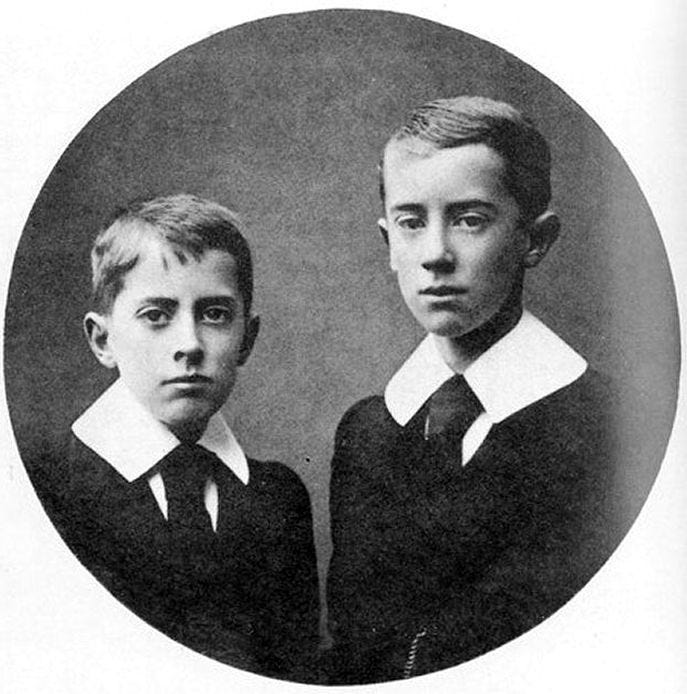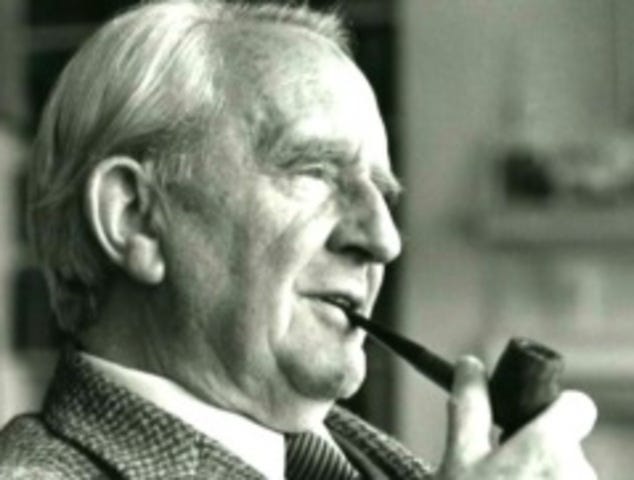The 'Color Palette' of J.R.R. Tolkien
How do authors paint stories for readers? It is a combination of different elements. Like colors in an oil painting, sentences provide shade and light, nudging us to focus on specific characters or themes.
No two authors use the same ‘palette.’ Sometimes, an author’s palette does so well that it sets a foundation for a specific genre. Their books become classics, starting points for future writers who might venture into those genres. While it’s no bad thing to venture from the ‘color schemes’ created by these authors—most authors do it!—as a writer of fantasy, I found the beloved tropes to be helpful when starting out. They allowed me to ease into the category, even as they encouraged me to learn by following examples.
There are many great fantasy writers today. I believe that most of them have been influenced by the ‘palette’ of J.R.R. Tolkien—even those who modified their own palettes, hoping for stories that were different. His manner of storytelling survived the tests of time. Different generations, genders, and cultures have found his Lord of the Rings books to be comforting, surprising, and enthralling.
How did he do it?
This is a question that we should ponder, in order to try and write solid stories of our own. This is not done in the hopes of copying Tolkien. The fantasy genre has grown. It now boasts of many different themes, some of which have no traces of him at all.
However, it’s worth noting that the ‘classic’ image of a fantasy book hasn’t changed. It still tends to involve dragons, quests, and battles between good and evil. Many authors take great pains to avoid these cliches, but a certain kind of reader will always seek that ‘classic’ adventure. This is worth pondering.
The First Hobbit
To make out an author’s favorite colors, it’s useful to know their own stories. For the most part, Tolkien lived a quiet life. Quiet does not mean boring! There is a certain sense of fulfillment that’s found when a person finds adventure in stillness. Most of us who enjoy books know this all too well.
Later in life, Tolkien admitted that he was more like a hobbit than any of the other races in his tales. He always had a vivid imagination, starting in childhood. He was born John Ronald Reuel Tolkien on January 3, 1892, but his friends called him Ronald. His parents, Arthur and Mabel, were living in South Africa when he was born. They had gone there because Arthur was in search of work. Hoping to improve their financial situation, he’d taken a job at the Bank of Africa.
In 1894, a second son came along, and they named him Hilary. The brothers would tell of adventures that they shared as children. Though some of these adventures took place in South Africa, the Tolkien boys did not live there for very long. In 1895, they returned with their mother to England in order to visit family. It was in England that their lives would change drastically.
Arthur Tolkien had sent his family to England, planning to join them after he finished some matters with work. This was not to be. In 1896, he became ill with rheumatic fever, losing his life. He died far away from his wife and sons.
Tragedy would not end there for the Tolkien boys. In 1904, their mother fell ill with diabetes, an illness which was poorly understood at the time. She died, leaving her two sons as orphans. She did not leave them desolate, however; they found comfort in the religion that she herself taught them.
Mabel Tolkien had converted to Catholicism after moving to England with the boys, defying her family members. She sent Ronald and Hilary to religious schools, teaching them well to ensure that they had spiritual strength. When she died, she left them in the care of a kind but stern priest. In J.R.R. Tolkien by Humphrey Carpenter, we read about this painful time in the author’s life:
Indeed it might be said that after she died his religion took the place in his affections that she had previously occupied. The consolation that it provided was emotional as well as spiritual. Perhaps her death also had a cementing effect on his study of languages. It was she, after all, who had been his first teacher and who had encouraged him to take an interest in words. Now that she was gone he would pursue that path relentlessly.
Good, Evil, & Many Languages
Ronald’s religion did more than help him through the loss of his beloved mother. It slipped into his writing, shaping his fictional world in significant ways. Not only did he become fascinated with ancient languages such as Latin, he often used objects in his book to serve as mirrors to religious themes. The mythology he created for his stories was rich with symbolism; the battle of good versus evil was clear to his readers. Other themes included sacrifice and purity of heart.
Language also had an influence on Ronald’s creativity. It was language that he went to Oxford in order to study. He became fixated on languages, finding books in foreign tongues and immersed himself in them. It was not long before he began to invent his own languages, complete with new alphabets, paying attention to minutiae such as grammar.
Carpenter writes:
He [Tolkien] once remarked, while talking about the invention of languages: ‘It’s not that uncommon, you know. An enormously greater number of children have what you might call a creative element in them than is usually supposed, and it isn’t necessarily limited to certain things: they may not want to paint or draw, or have much music, but they nevertheless want to create something. And if the main mass of education takes a linguistic form, their creation will take a linguistic form. It’s so extraordinarily common, I once did think that there ought to be some organised research into it.’
His fixation with languages shows the importance of details when it comes to world building. It might seem like The Hobbit is a simple tale about a dragon, yet it is beloved in a way that few books achieve. What makes it memorable is that there are so many layers contributing to create the narrative, including the tongues spoken.
Language and religion—these are only some of the ways in which Tolkien used his personal experience to create depth in writing. He took what he knew, things that shaped him into an adult. He used them to make believable systems strong enough to carry a very long story.
An Author’s Fingerprint
This isn’t limited to J.R.R Tolkien. Every author leaves fingerprints in their work, hints that whisper of their lives. I, as an author, thought that I was separating writing and life. Then, I decided to return to read my work after a long break. In these rereads, I found sentences that whispered about me.
We pour so much of ourselves into our work; it’s impossible to not leave traces in our paragraphs.
Tolkien is not the only author to use a personal ‘palette,’ but he is a very powerful example. From him, we learn how personal beliefs and hobbies enhance a story’s ‘color.’ To understand the skills of our favorite authors, we would do well to learn their stories. Classic novels provide us with plenty of information to dig through.
Other famous instances include Mary Shelley’s book, Frankenstein. It was inspired by a dream she had. Not only that, but her tragic past shaped the torment of Frankenstein’s monster. Louisa May Alcott became famous with her book, Little Women. It was inspired by the childhood that she shared with her three sisters, and events that happened to them in real life.
A longer post could, and should, be written, detailing other ways in which Tolkien made his stories complex. I have not yet gone on to reread The Lord of the Rings. Because of this, I didn’t feel qualified to take on such a project. I likely will try, once I finish the trilogy again. It is The Hobbit that sent me on this tangent.
There is so much more to a classic book than the story itself. To get more from your reading experience, take time to research the authors themselves, the minds behind these tales. Trace the details, the ‘colors’ they used to create complex worlds. Learn from them when you back to your own writing.
We might not all take the time to research languages like Tolkien, but we would do well to realize that a good story takes time. It might take months, or even years, to have the words feel right on paper. If sufficient effort is put into every aspect, all of that time will prove to be worthwhile.







